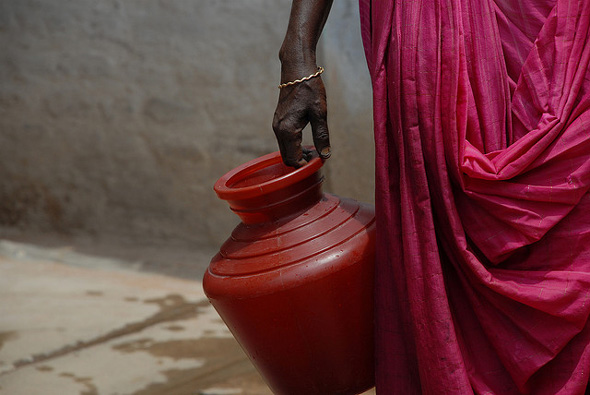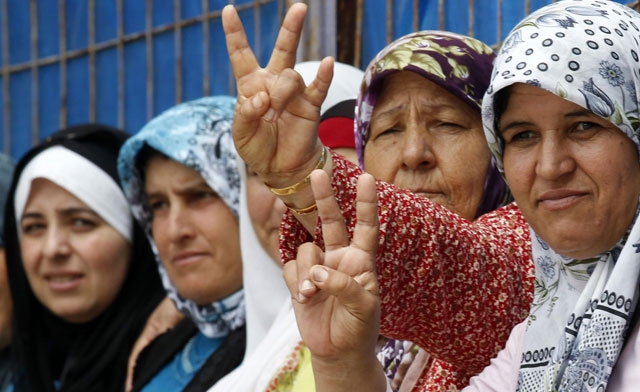Noemi Manco joins JiC for this timely post on reparations for women in post-conflict societies. Noemi is a legal advisor for migrants and asylum seekers in France. She has also worked for Amnesty International in Switzerland and Redress in London.
Well-crafted and implemented reparations are both able to redress women victims for atrocities as well as prevent their repetition. Can reparations today fulfil these aims and meet these expectations? To answer this question, one must look into women’s multiple and overlapping identities in conflicts and subsequently adapt reparation schemes in order to address these goals.
It has long been recognized that women are affected by armed conflicts in different ways than men. But the experiences of women in war continues to be overlooked. Despite recent progress, this is also broadly true of the realm of international criminal justice. Crimes suffered by women are not restricted to sexual and reproductive violence but also entail a variety of crimes that affect both sexes in different ways, to different extents and for different reasons.
It is also recognized within the realm of international law that, in the aftermath of conflict, victims are entitled to reparations. Historically, reparations for international crimes were intended to ‘restore’ the victim to his/her situation prior to the harm. This included the provision of homes for displaced individuals, achieving freedom for prisoners, etc. It soon became clear, however, that these measures were insufficient and, in some cases, even cynical. If structural injustices that triggered or worsened armed conflict were left unaddressed,gender-biased violence and atrocities could be repeated and durable the building of lasting peace could not be guaranteed.
In this context, the Inter-American Court of Human Rights, in Tamayo v. Peru (1997) defined reparations in a novel way, ruling that any scheme should take into account the victims’ self-development and their expectations for the future. This considerably broadened the range of reparations, opening the door to service provisions, political and legal reforms, as well as complex financial programmes.
Women Victims, Women Agents
The experience of many women in conflicts has long been shunned from conflict narratives. This is at least partly due to the fact that there are relatively few women combatants. The expectation attached to womanhood is often as a care-taker – to stay at home and care for the family and its possessions. The risks of staying behind in times of conflict, however, are considerable. Women are often more exposed to abuse, economic hardship, land destruction, or may find it impossible to escape from danger when it arrives close to home.
At the end of the war, women may also be indirectly victimized. ‘Secondary victimization’ designates the repercussions on women of the harm done to others. These repercussions are often the result of social, legal or political systems which favour men. For instance, a widow whose husband was killed in combat may not be allowed by law or custom to work and earn a living, thus subjecting her to poverty.
It would be reductionist, however, to only describe women as victims. Those who do not join active conflict also have meaningful agency as actors in the context of violent political conflict. In the absence of men, women often become the family breadwinners, a role traditionally left to men. Guarding stocks, producing goods, earning an income and even ensuring the family’s safety can come under women’s purview. In other words, through conflict, women can gain unprecedented access to the public sphere and can achieve a degree of economic independence. This may, however, place women under increased hardship and their role as social agents of change often overlaps with victimhood: a woman who has been raped and forced to leave her house may also be the family’s breadwinner and protector.
In order for reparations to be successful and effective, they ought to address the needs of women victims in their complexity with respect to both victimhood and agency. A balance can – and must – be found. Yes, many women are victims of gross human rights abuse precisely because of their gender. But women victims are also agents of change, able and willing to actively participate in reconstruction efforts. In other words, reparations must both be backward-looking (bringing closure and redress) as well as forward-looking (providing tools to build lasting peace and prevent further gender-based inequality). This is the conclusion of the 2007 Nairobi Declaration on Women’s and Girls’ Right to a Remedy and Reparation.
Addressing the past, looking to the future
Reparations must strike a subtle balance. On the one hand, redress solely directed at victims would fail to address structural gender-based inequalities. On the other hand, deep social, economic or legal reforms, benefitting all women, may stop constituting specific reparation schemes for victims of abuse, and be closer to development programmes. Deep reforms are indeed needed, but should be combined with addressing the immediate and specific needs of women victims.
A tailored, balanced response to these challenges would be to offer collective benefits with favoured access for victims. For instance, reparations could be aimed at building of school facilities accessible to all, complemented by financial support for victims to cover their children’s fees. Such measures would ensure both specific reparations to victims, long-term social transformation, and positive impact on women’s and girls’ conditions
Similarly, professional training could be opened for all women in a community. But women victims could also benefit from a grant to start their career at the end of the course. These measures follow the logics of the IACHR in Tamayo v. Peru which provided to girls and women not only redress for the harm they have suffered but also the opportunities they should have had in the first place, as rights-holders, economic agents, and community members.
Gender-sensitive reparations may also be used as leverage to reform domestic law. There is a risk of financial reparations to women victims falling into the wrong hands, particularly in situations where domestic or customary law prevents women from possessing wealth in their own name. A savvy reparation measure would be to give victims regular sums of money as compensation as well as pursuing legal reforms with the goal of guaranteeing and protecting women’s right to effectively access and manage their own finances. Once again, this measure fulfils the double requirement of specific reparation to victims and transformative potential for all women.
Balancing Short-term Relief and Long-term Change
The aforementioned measures are but a few examples from the wide range of possibilities that reparation schemes can offer. The aim here is not be exhaustive but to highlight the necessity of addressing women victims’ needs specifically, taking into account the multiplicity of roles women have in conflicts and in their aftermath. These examples show the difficulty of balancing direct and specific reparations with deep societal transformations. Short-term relief and long-term change must be equally satisfied in order for reparations to be just, efficient and empower women durably.




